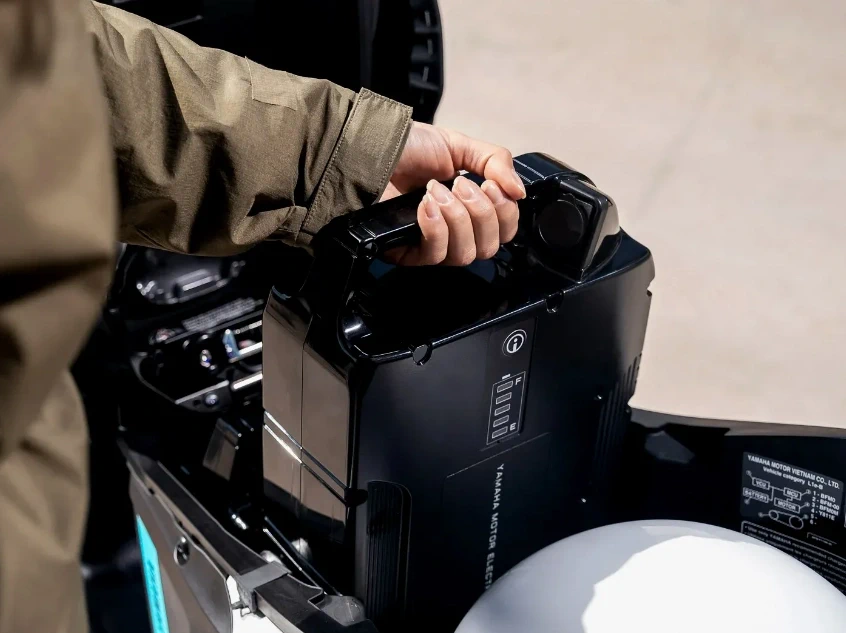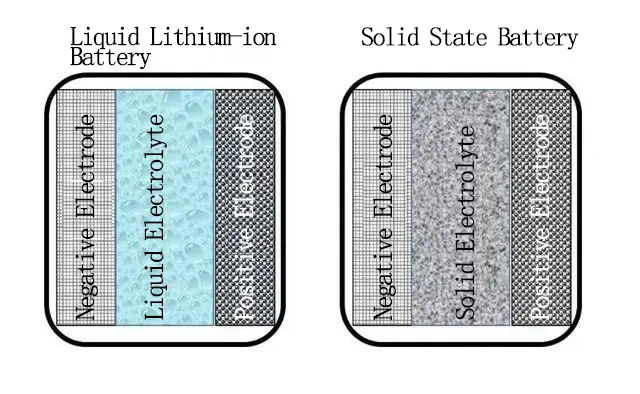Solid State Battery vs Lithium Ion: The Ultimate Guide
Table of Contents
In today’s fast-paced world, the energy source that powers our devices is just as important as the devices themselves. While lithium-ion batteries have been the reigning champs in energy storage for a while, there’s a new player in town: solid state batteries. Dive into the world of energy storage as we explore the classic lithium-ion battery and introduce its solid successor. How do they compare, and what might the future hold? Let’s find out!
Understanding Lithium-Ion Batteries
What’s a Lithium-Ion Battery?
A lithium-ion battery is a kind of rechargeable battery. It works by moving lithium ions between two ends called the positive and negative poles. When you charge it, the lithium ions move from the positive pole, go through a middle part, and go to the negative pole. When you use the battery, the ions move back the other way.
The first successful lithium-ion battery was made by a Japanese company called Sony in 1990. Instead of using pure lithium, they put lithium ions into carbon for the negative pole. The positive pole often has materials like LixCoO2 or LixNiO2 or LixMnO4. The middle part uses something called LiPF6 mixed with other stuff.

Solid State Batteries: The Future of Energy Storage?
What’s a Solid State Battery?
A solid state battery is a new kind of battery. It’s not like the common lithium-ion batteries we use today. Instead of liquids, it uses solid parts inside.
Scientists think lithium-ion batteries have reached their best. So, they now see solid state batteries as the next big thing. These batteries use a glassy mix of lithium and sodium. This replaces the liquid used in lithium batteries, making them hold more power.
In a field called solid-state ionics, these batteries use all solid parts. They might have less power but can store a lot of energy. Because they’re light and powerful, they’re perfect for electric cars.
How Does a Solid State Battery Work?
Imagine an old-timey rocking chair. Regular lithium batteries are like this chair. The two ends of the chair are the battery’s two poles. The middle part is a liquid. Now, picture lithium ions as runners. They run back and forth between the two ends. As they move, the battery charges and discharges.
Solid state batteries are similar. But instead of a liquid middle, they have a solid one. This lets more charged ions gather at one end, moving more electricity. So, solid state batteries can be smaller but hold the same power. Plus, with no liquid inside, they’re easier to seal. This makes them great for cars. There’s no need for extra cooling or controls, saving money and reducing weight.

The 4 Key Advantages of Solid State Batteries Over Lithium-Ion
What’s the Difference Between Solid State Batteries and Lithium-Ion Batteries?
Solid state batteries and lithium-ion batteries have some big differences. The main one is what’s inside. Lithium-ion batteries have a liquid inside, which makes them heavy. And because they don’t hold a lot of power, we need to use many of them together, which makes them even heavier. This makes electric cars expensive because the battery is a big part of the cost.
There are other problems with the liquid inside lithium-ion batteries. It can catch fire if the battery gets too hot. If there’s a car crash, the battery could start a big fire. The liquid can also freeze in cold weather, making the battery not work as well. Plus, this liquid can wear out parts of the battery over time, and the battery can get these things called dendrites. These problems make the battery not last as long or work as well.
Now, solid state batteries don’t have this heavy liquid. Instead, they have solid stuff like glass or ceramics inside. They work kind of like lithium-ion batteries but are smaller and more compact. If we replace the batteries in electric cars with solid state batteries of the same size, they could hold over twice as much power.
Solid state batteries are also lighter and don’t need all the extra stuff that lithium-ion batteries need to stay cool or warm. This means we can fit more batteries in an electric car, giving the car a longer drive range.
Four Big Differences Between Lithium and Solid State Batteries:
- How much energy they can store: Solid state batteries can store more energy for their size and weight than lithium-ion batteries. Right now, lithium-ion batteries store between 250 to 300 units of energy (Wh/kg). Solid state batteries can store over 500 units.
- Cost: Solid state batteries are more expensive right now. This is because they are new and it’s not as easy to make them in big amounts. Lithium-ion batteries have been around longer and are cheaper to make.
- How far you can go on one charge: Since solid state batteries can store more power, cars using them can go farther on a single charge. This is especially good for long trips. But, they take longer to charge up, which some people might not like.
- Safety: Solid state batteries are safer. The liquid in lithium-ion batteries can catch fire or explode if it gets too hot. But, solid state batteries don’t have this risk because they don’t have this liquid.
| Criteria | Lithium-Ion Battery | Solid State Battery |
|---|---|---|
| Advantages: | ||
| Energy Density | Moderate (250-300 Wh/kg) | High (>500 Wh/kg) |
| Production Cost | Lower (Due to scale and experience) | Higher (Newer technology) |
| Maturity | Well-established and widely used | Emerging technology |
| Charge Time | Generally faster | Can be slower |
| Weight | Heavier due to liquid electrolyte | Lighter |
| Safety | Can overheat or catch fire under certain conditions | Safer due to solid electrolyte (no leakage/fire) |
| Lifecycle | Can degrade faster due to liquid electrolyte | Potentially longer lifespan due to solid structure |
| Cold Weather Performance | Performance drops significantly in cold conditions | Typically better performance in colder conditions |
| Disadvantages: | ||
| Energy Density | Lower compared to solid state | N/A |
| Production Cost | N/A | High due to newer technology |
| Maturity | N/A | Still being developed for mass market |
| Charge Time | N/A | Can be slower compared to Li-ion |
| Weight | Heavier | N/A |
| Safety | Risk of fire or explosion (MANLY Battery possesses battery protection technology to prevent lithium batteries from exploding or catching fire during severe impacts.) | N/A |
In conclusion, while lithium-ion batteries have served us well for years, solid state batteries offer exciting promise. They’re lighter, can hold more power, and present fewer risks. Both have their pros and cons.


